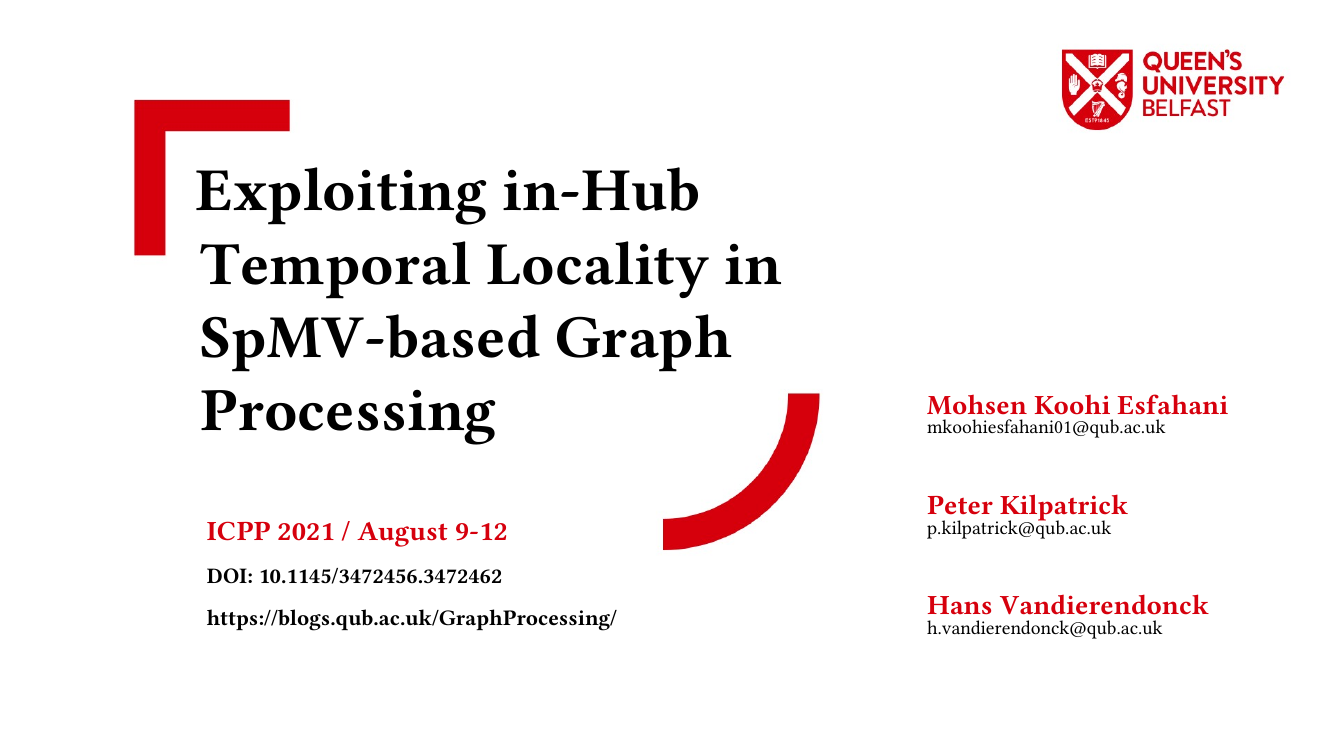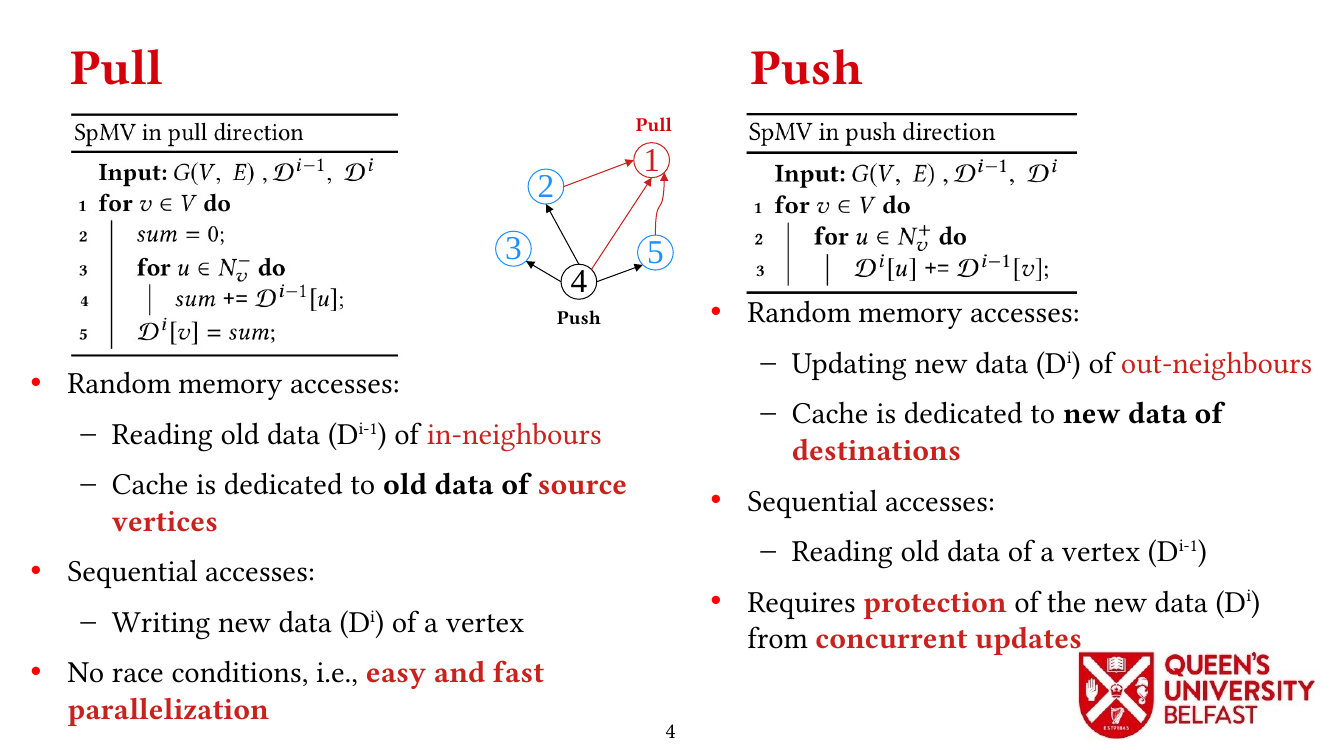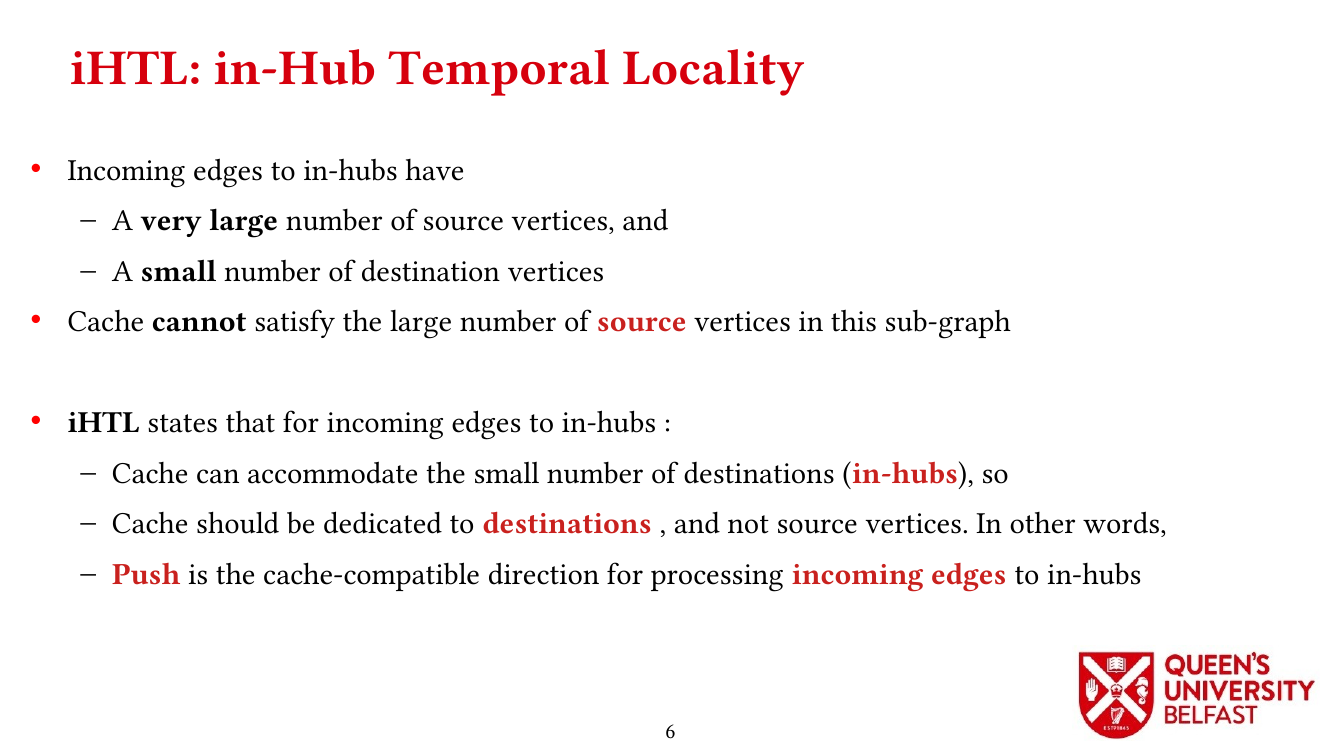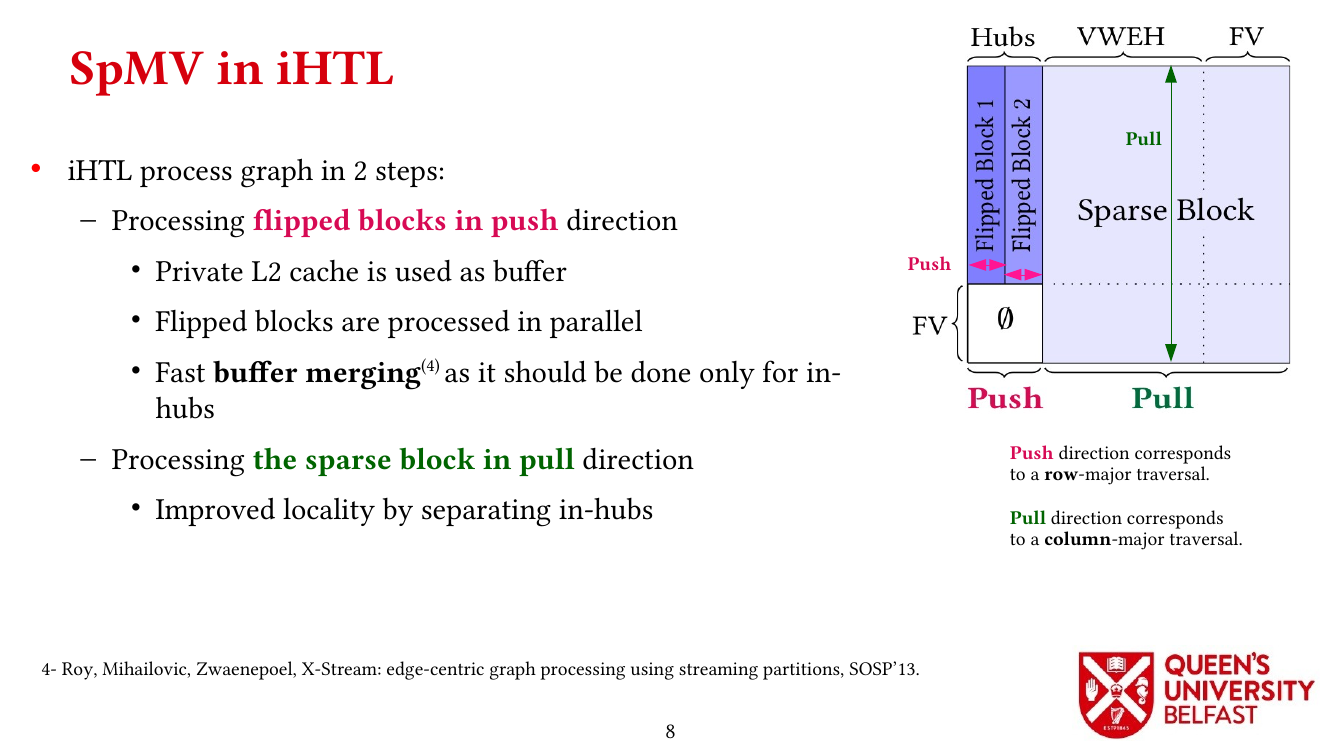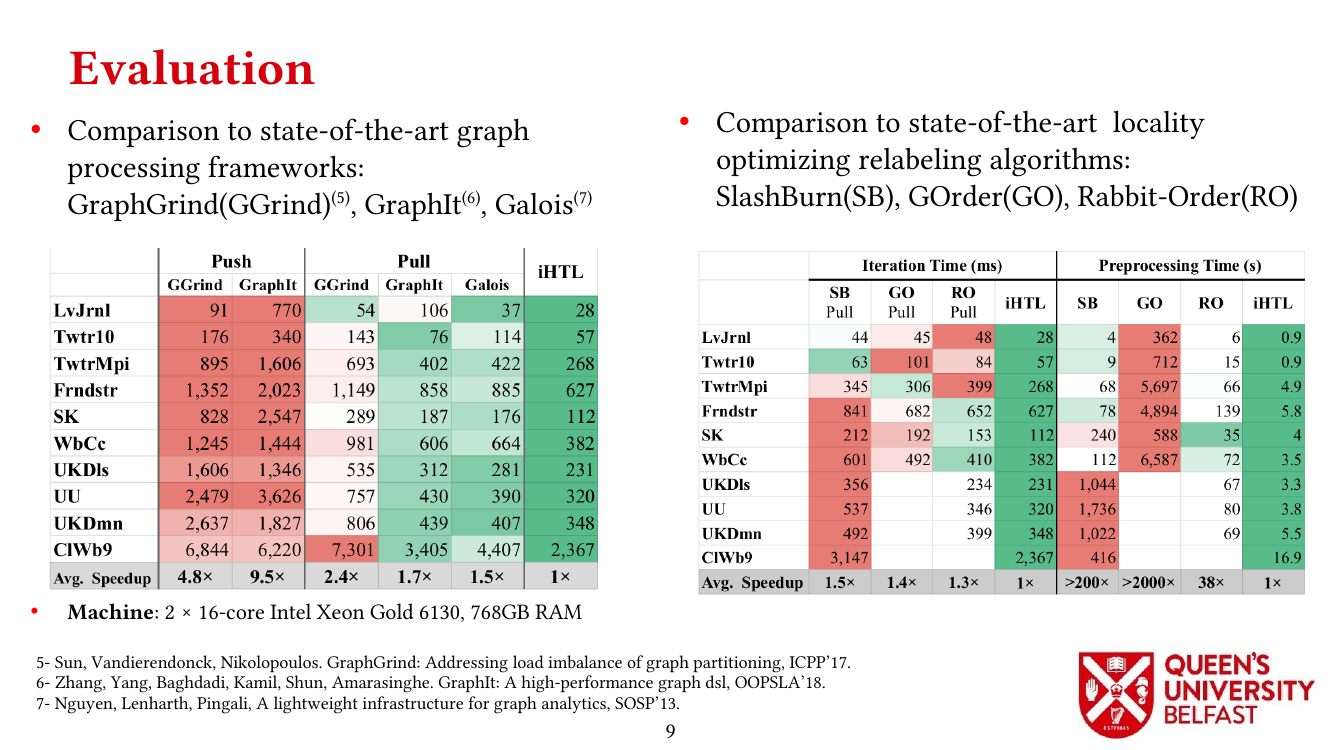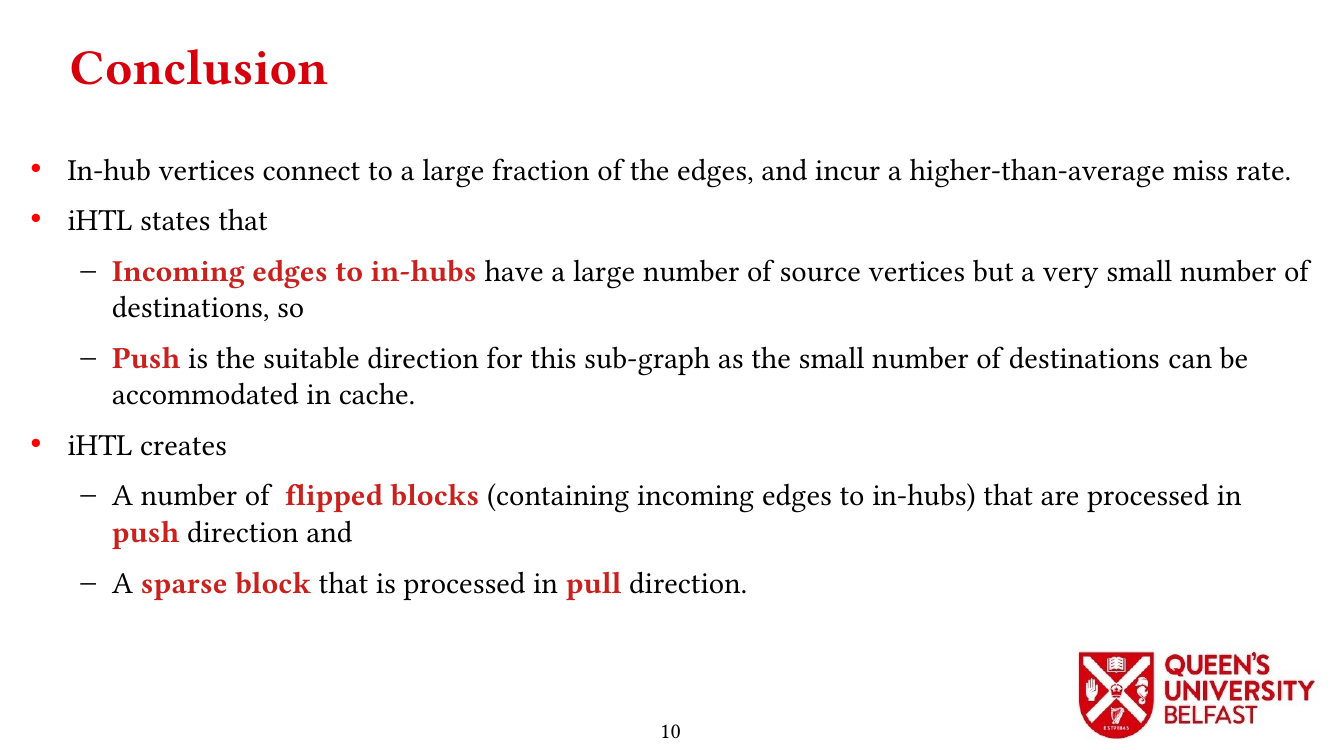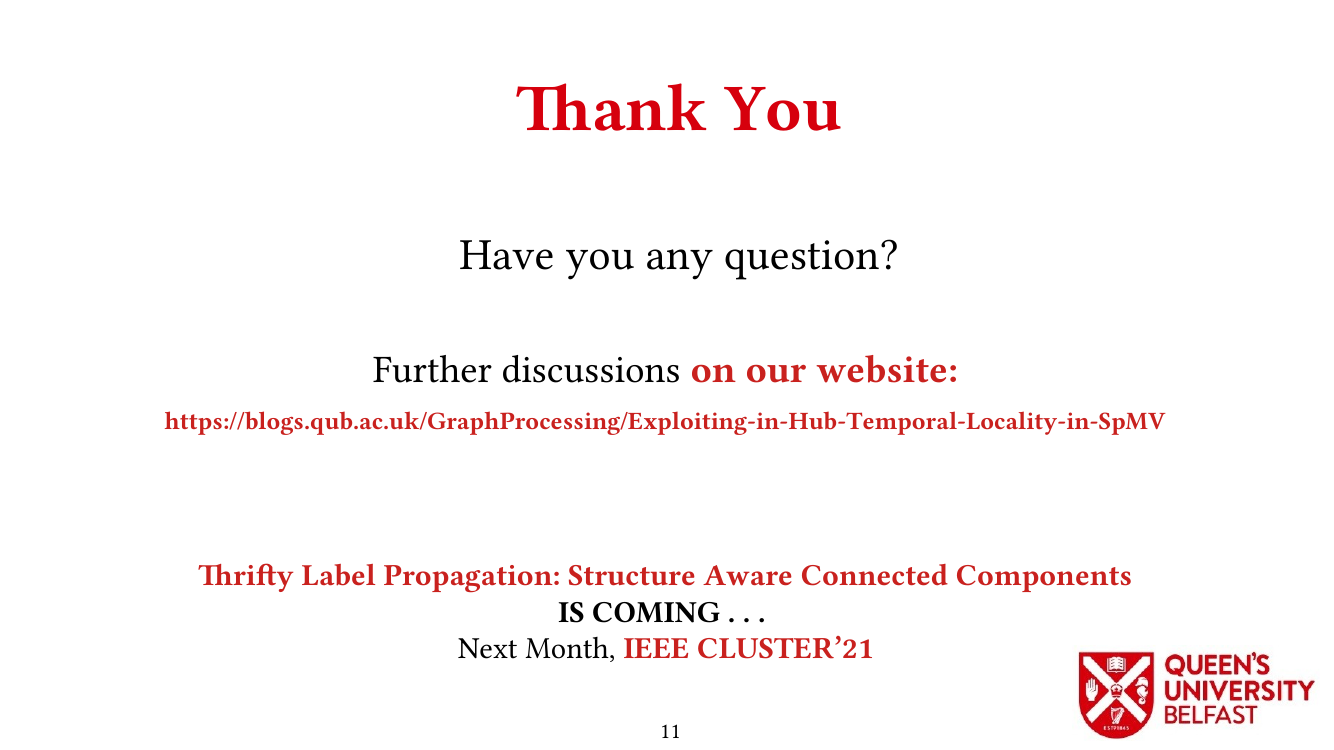50th International Conference on Parallel Processing (ICPP’21)
August 9-12, 2021
Acceptance Rate: 26.4%
DOI:10.1145/3472456.3472462
ACM Digital Library
PDF Version (Authors’ Copy)
This paper investigates the implications made by the structure of real-world graphs with power-law degree distribution on the locality of SpMV graph analytics, and by considering the efficacy of locality optimizing graph reordering algorithms (such as SlashBurn, GOrder, and Rabbit-Order) shows that irregular datasets requires special traversals in order to improve locality for hub vertices that dedicate a large portion of the processing time to themselves.
We introduce in-Hub Temporal Locality (iHTL) as a structure-aware and cache-friendly graph traversal that optimizes locality in pull traversal. iHTL identifies different blocks in the adjacency matrix of a graph and applies a suitable traversal direction (push or pull) for each block based on its contents. In other words, iHTL optimizes locality of one traversal of all edges of the graph by:
(1) applying push direction for flipped blocks containing edges to in-hubs, and
(2) applying pull direction for processing sparse block containing edges to non-hubs.
Moreover, iHTL introduces a new algorithm to efficiently identify the number of flipped blocks by investigating connection between hub vertices of the graph. This allows iHTL to create flipped blocks as much as the graph structure requires and makes iHTL suitable for a wide range of different real-world graph datasets like social networks and web graphs.
iHTL is 1.5× – 2.4× faster than pull and 4.8× – 9.5× faster than push in state-of-the-art graph processing frameworks. More importantly, iHTL is 1.3× – 1.5× faster than pull traversal of state-of-the-art locality optimizing reordering algorithms such as SlashBurn, GOrder, and Rabbit-Order while reduces the preprocessing time by 780×, on average.
Code Availability
The source-code will be published soon.
BibTex
@INPROCEEDINGS{10.1145/3472456.3472462,
author = {Koohi Esfahani, Mohsen and Kilpatrick, Peter and Vandierendonck, Hans},
title = {Exploiting In-Hub Temporal Locality In SpMV-Based Graph Processing},
year = {2021},
isbn = {9781450390682},
publisher = {Association for Computing Machinery},
address = {New York, NY, USA},
url = {https://doi.org/10.1145/3472456.3472462},
doi = {10.1145/3472456.3472462},
booktitle = {50th International Conference on Parallel Processing},
numpages = {10},
location = {Lemont, IL, USA},
series = {ICPP 2021}
}Related Posts
- ParaGrapher Integrated to LaganLighter

- On Designing Structure-Aware High-Performance Graph Algorithms (PhD Thesis)

- LaganLighter Source Code

- MASTIFF: Structure-Aware Minimum Spanning Tree/Forest – ICS’22

- SAPCo Sort: Optimizing Degree-Ordering for Power-Law Graphs – ISPASS’22 (Poster)

- LOTUS: Locality Optimizing Triangle Counting – PPOPP’22

- Locality Analysis of Graph Reordering Algorithms – IISWC’21

- Thrifty Label Propagation: Fast Connected Components for Skewed-Degree Graphs – IEEE CLUSTER’21

- Exploiting in-Hub Temporal Locality in SpMV-based Graph Processing – ICPP’21

- How Do Graph Relabeling Algorithms Improve Memory Locality? ISPASS’21 (Poster)



